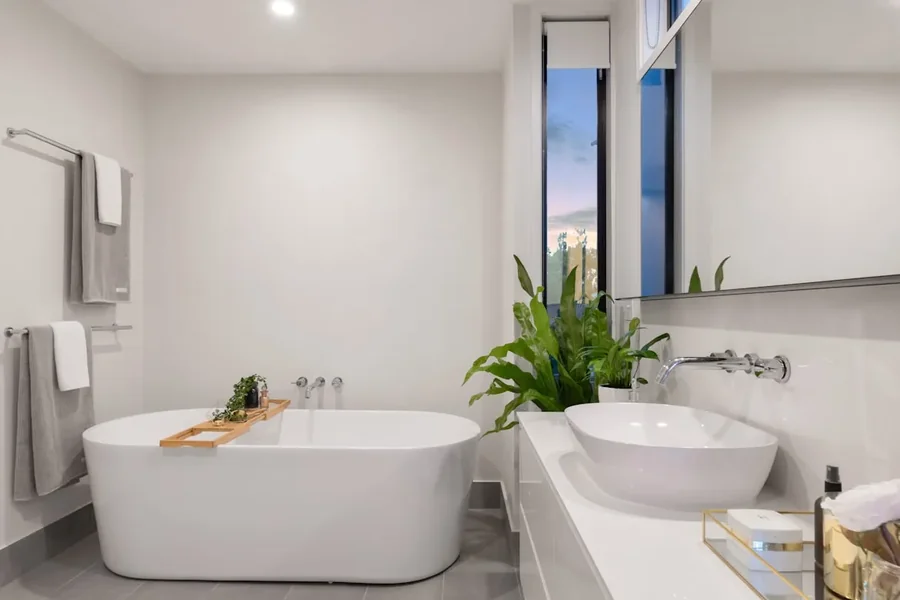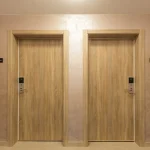The twilight years of anyone’s life bring wisdom and perspective, but physical challenges too. These don’t arrive in equal measures. Due to obvious mobility restrictions and decreased balance, many senior citizens face heightened risks in their own homes.
According to the Centers for Disease Control and Prevention (CDC), over 25% of older adults sustain falls each year, and falling once increases the likelihood of a repeat incident.
In old age, whether one acknowledges it or not, individuals require assistance to varying degrees. Yet across America, 28% of people aged 65 and older live completely alone. This independence becomes precarious when basic daily activities turn dangerous.
Bathrooms present particular hazards for seniors. Simple design modifications can transform these spaces from accident zones into safe havens, preserving both dignity and well-being for those who’ve earned the right to age comfortably at home.
Pay Attention to the Safety of Bathroom Design
It’s rather unfortunate how little consideration goes into accommodating physical limitations in standard bathroom designs. Sharp corners, slippery surfaces, and hard-to-reach fixtures dominate spaces originally designed for young, mobile users. Considering these risks, slip-and-fall mishaps are common in bathrooms.
Even with well-intentioned design modifications, seniors with mobility and cognitive challenges might be at a greater risk. Fortunately, agencies that focus on helping seniors with home care can help. They provide at-home care, ensure safety, and help if aging adults suffer from falls and accidents.
According to cwihomecare.com, home care services for seniors cover several other essential areas, such as palliative care, to ensure complete well-being. Besides having seasoned caregivers looking after seniors, modifying bathroom designs for safety is essential. Here are a few steps that can help create senior-friendly spaces:
#1: Use Non-Slip Mats and Flooring for Added Stability
Wet bathroom floors create treacherous conditions that catch even steady walkers off guard. Traditional ceramic tiles are particularly dangerous when moisture accumulates, creating skating rink conditions where seniors need a secure footing most.
Modern non-slip flooring solutions address these risks through textured surfaces and specialized materials. Vinyl flooring with raised patterns provides excellent traction while remaining easy to clean and maintain.
Rubber flooring offers superior grip but requires careful selection to avoid products that trap moisture underneath. Textured ceramic tiles work well when properly sealed and cleaned regularly.
Strategic mat placement doubles protection in high-risk areas. Quality bath mats with suction cup backing prevent sliding while absorbing excess water.
We recommend positioning the mats outside shower areas, near sinks, and by toilet locations where stepping movements occur frequently. Replace mats showing wear signs immediately since deteriorating suction cups lose effectiveness quickly, creating false security that leads to accidents.
#2: Install Grab Bars for Enhanced Bathroom Safety
As you age, your balance and coordination can decline, making you more vulnerable to slips. Concussions, which can happen more easily after a fall, become far more dangerous as you get older.
A simple grab bar can help reduce that risk by offering a reliable point of support. Place them strategically near the toilet, in the shower, and along any high-traffic areas to ensure stability wherever you need it.
Position horizontal bars along shower walls at 33-36 inches from the floor, ensuring they span the entire bathing area. Vertical bars work best near toilet areas and entrance points.
Quality matters significantly when selecting grab bars. Stainless steel or powder-coated aluminum models withstand moisture better than plastic alternatives. Each bar must support at least 250 pounds to meet safety standards.
Wall anchoring becomes critical since standard drywall anchors fail under stress. Professional installers locate wall studs or use specialized anchoring systems rated for bathroom environments.
#3: Improve Your Bathroom Lighting
Poor lighting in the bathroom can make even the most familiar spaces feel hazardous. As you age, your vision naturally declines, and dimly lit areas increase the likelihood of tripping or misjudging steps. We strongly suggest placing brighter, energy-efficient lighting around the most frequented areas, such as the shower, toilet, and sink.
Better yet, go for motion-sensor lights that automatically illuminate the room when you enter. It helps lower the risk of navigating in the dark, especially during nighttime trips to the bathroom.
Placing lights near stairs or any raised platforms can also help highlight potential tripping hazards.
When your bathroom is properly lit, it’s easier to spot obstacles, and your chances of falling are significantly reduced. Since the risk of serious injuries like concussions increases with age, proper lighting becomes an essential step in maintaining a safer and more accessible bathroom.
A Step Toward Confidence and Safety
With a few simple adjustments, you can create a bathroom that offers both security and peace of mind. These changes empower you to move freely, knowing that your environment is engineered for safety. Taking proactive steps today ensures a safer, more comfortable tomorrow. A little effort goes a long way in maintaining your independence.






